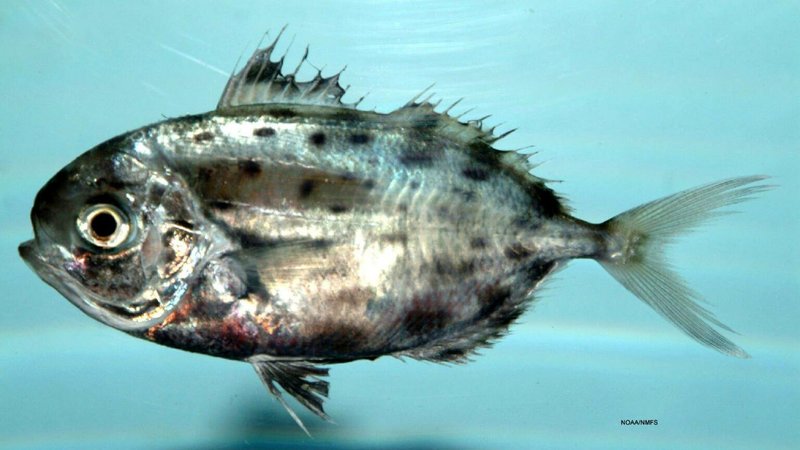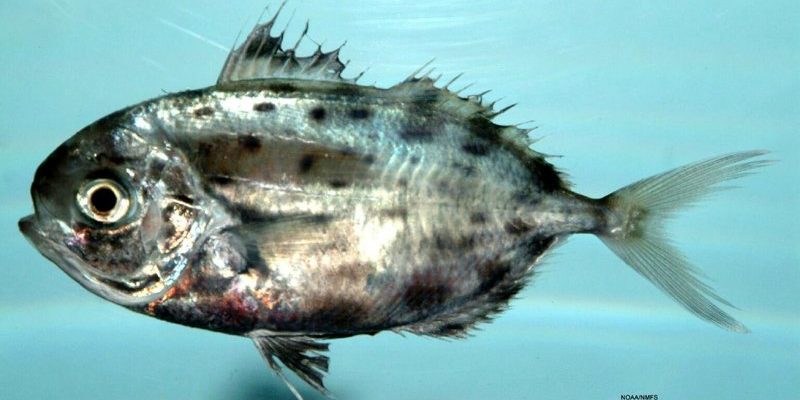
What Are Driftfish?
Driftfish might not be the first creature that pops into your mind when you think of fascinating marine life, but these unique fish are truly captivating. Imagine a fish so uniquely adapted that its life is a constant drift through the ocean currents. Driftfish, also known as *driftfish*, have this incredible ability to move with the tides, making them masters of the open waters. They play a crucial role in their ecosystem, often found in the vastness of the ocean where they contribute to biodiversity.
You might be wondering how these fish got their name. Well, it’s simple! Driftfish are known for their behavior of drifting with the ocean currents rather than swimming actively against them. This adaptation not only helps them conserve energy but also allows them to find food more efficiently. They often feed on plankton and other small organisms that are also carried by these currents. So, in a way, these fish are like surfers riding the waves of the ocean, going wherever the tide takes them.
In this article, we’ll explore the world of driftfish, including their habitat, diet, and interesting characteristics. Join me on this journey to discover why these fish are so vital to their marine environments and how their unique behaviors contribute to the health of our oceans.
Physical Characteristics
Driftfish have some fascinating physical traits that help them thrive in their aquatic surroundings. One of the most notable features is their streamlined bodies, which make them highly efficient at moving with the water flow. Their bodies are typically elongated and flattened, allowing them to glide through the water effortlessly. This shape not only helps with buoyancy but also reduces drag, making it easier for them to maintain their position in the current.
Another interesting aspect of driftfish is their coloration. Many species boast a shimmering appearance with stunning hues of blue, silver, and green. This iridescence serves a dual purpose: it makes them less visible to predators and also allows them to reflect light beautifully in the water. Imagine swimming in the ocean and seeing these shimmering fish darting around you—it must be an enchanting sight!
In terms of size, driftfish vary depending on their species, but they can typically range from a few inches to over a foot in length. The average driftfish you might encounter in the wild is around 6 to 10 inches long. Their size and shape equip them to take advantage of the plentiful food sources found in the currents, making them efficient hunters in their own right.
Habitats of Driftfish
Driftfish are mostly found in the open ocean, often dwelling in offshore waters where the currents flow strong and steady. They thrive in warm, temperate waters and can usually be spotted at various depths, from the surface to several hundred feet below. You can think of them as ocean nomads, always on the move and seeking the best conditions for feeding and breeding.
One of the most critical habitats for these fish is the area known as the pelagic zone. This zone encompasses the entire ocean water column, where sunlight can still reach, supporting a diverse array of life. Driftfish tend to occupy the upper layers of this zone, where they can easily access their primary food source—plankton. These tiny organisms are abundant in nutrient-rich waters, making them an ideal dining option for driftfish.
Interestingly, driftfish often gather around underwater structures, such as reefs, where the currents may meet. These areas can serve as perfect feeding grounds, as various small fish and invertebrates are attracted to the structures as well. By staying in these environments, driftfish can take advantage of the plentiful food and safety from larger predators.
Feeding Habits
When it comes to food, driftfish are filter feeders, meaning they consume their meals by filtering water through their gills. Their primary diet consists of tiny organisms such as plankton, small fish larvae, and other microscopic creatures. You might be surprised at how efficient these fish are at obtaining their food! They can capture large quantities of plankton simply by swimming through the water and allowing the currents to carry their food into their mouths.
Driftfish are also known to engage in a behavior called “current feeding.” This means they use the ocean’s currents to their advantage, positioning themselves just right to catch food as it drifts by. Imagine standing in a gentle stream with your mouth open, waiting for delicious treats to float your way—this is essentially how driftfish operate!
The size of their meals can vary based on the abundance of food in the environment. When food is plentiful, these fish can grow larger and more robust. However, during lean times, they might have to adapt by making longer journeys through the waters to find enough sustenance. This adaptability contributes to their survival, allowing them to thrive even in challenging conditions.
Reproduction and Life Cycle
Driftfish have a fascinating reproductive cycle that adds another layer to their intriguing nature. Generally, they reproduce through a process called spawning, where females release their eggs into the water, and males fertilize them. This method ensures that the eggs are distributed widely throughout the ocean, increasing the chances of survival for the young fish.
The timing of spawning can vary among species, but it often coincides with optimal environmental conditions, such as warmer water temperatures and abundant food sources. After the eggs hatch, the young driftfish are called larval fish and begin their journey through the ocean. During this early stage, they rely heavily on the currents for transportation while they continue to grow and develop.
As they mature, driftfish will start to resemble their adult forms, taking on the characteristic features that define their species. This period of growth can last several months, and once they reach maturity, they will join the adult population in the open waters. Depending on the species, driftfish can live anywhere from a few years to over a decade, contributing to their localized ecosystems during their lifetime.
Conservation Status
While driftfish may seem abundant in their natural habitats, they face various threats that can impact their populations. One of the main challenges is overfishing, as these fish are often caught unintentionally by fishermen targeting larger species. Bycatch can pose a serious risk, leading to significant declines in driftfish numbers in affected areas.
Additionally, habitat destruction is another threat to their survival. As ocean habitats are disrupted by human activities like coastal development and pollution, driftfish can lose their breeding and feeding grounds. Protecting these essential ecosystems is critical for ensuring that driftfish populations can thrive.
Conservation efforts are essential to maintaining healthy driftfish populations. Many organizations focus on sustainable fishing practices and habitat protection to mitigate these challenges. By promoting awareness of driftfish and their role in the marine ecosystem, we can help ensure their continued existence for future generations.
Interesting Facts About Driftfish
– Driftfish have a unique adaptation that allows them to sense changes in water currents, helping them navigate their environment more effectively.
– They often swim in groups or schools, which can provide protection from predators and increase their foraging efficiency.
– Some species of driftfish are known to change color or pattern depending on their mood or environment, making them even more fascinating to observe.
| Characteristic | Details |
| Size | Typically 6 to 10 inches long |
| Habitat | Open ocean, mainly pelagic zone |
| Diet | Plankton and small invertebrates |
| Reproduction | Spawning with wide distribution of eggs |
| Average Lifespan | Several years to over a decade |
FAQ
What are some common species of driftfish?
Driftfish encompass various species, including the *Driftfish Planktoides* and *Driftfish Carangidae*. These species can differ in size, color, and habitat preferences, making them a diverse group. Each type has adapted to specific environmental conditions, which makes them interesting to study and observe.
How do driftfish find their food?
Driftfish primarily rely on the currents of the ocean to bring food to them. They filter feed by taking in water and extracting plankton and small organic matter as it flows by. This method is energy-efficient, allowing them to cover large distances while still feeding constantly.
Are driftfish important to the ecosystem?
Absolutely! Driftfish contribute significantly to their marine ecosystems by participating in the food web. They serve as prey for larger fish and marine animals and help control plankton populations by consuming them. Their presence helps maintain a balanced ecosystem, which is essential for ocean health.
What threats do driftfish face?
Driftfish face several threats, including overfishing and habitat loss due to human activities. Bycatch can significantly impact their populations, as many are unintentionally caught while targeting other fish. Additionally, pollution and the destruction of marine habitats can disrupt their breeding and feeding grounds.
How can we help protect driftfish?
Supporting sustainable fishing practices, reducing plastic usage, and participating in marine conservation efforts are great ways to help protect driftfish and their habitats. Raising awareness about these fish and their ecological importance can also encourage others to take action.
What is the best way to observe driftfish?
If you’re keen on observing driftfish, consider snorkeling or diving in areas known for vibrant marine life. Many driftfish inhabit warm coastal waters, so visiting coral reefs or protected marine areas can provide opportunities to see these graceful swimmers in their natural habitat.
Can driftfish adapt to changing environments?
Driftfish show a remarkable ability to adapt to changes in their environment, such as temperature shifts or the availability of food. While they can move to different waters to find suitable conditions, significant disruptions like habitat destruction can pose long-term threats to their adaptability.
Are there any conservation programs specifically for driftfish?
Yes, several organizations focus on marine conservation, advocating for sustainable fishing practices and habitat protection that indirectly benefit driftfish. These programs often aim to restore damaged ecosystems, ensuring that the waters where driftfish live remain healthy and thriving.
Do driftfish have any natural predators?
Yes, larger fish, seabirds, and marine mammals are among the natural predators of driftfish. Their schooling behavior can help provide some safety, but they must always remain vigilant to avoid being caught by a hungry predator.
How do driftfish contribute to scientific research?
Driftfish serve as important indicators of ocean health due to their sensitivity to environmental changes. Researchers often study their populations and behaviors to understand better the impacts of climate change and pollution on marine ecosystems. This information can help shape conservation strategies moving forward.

